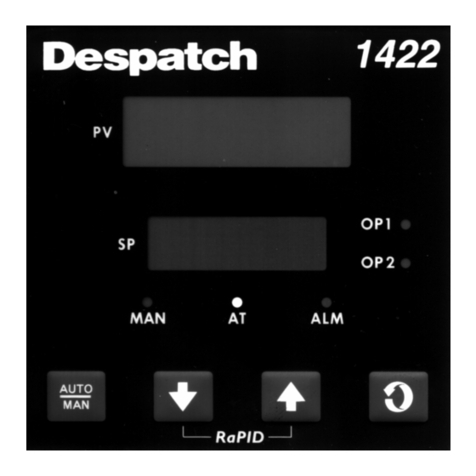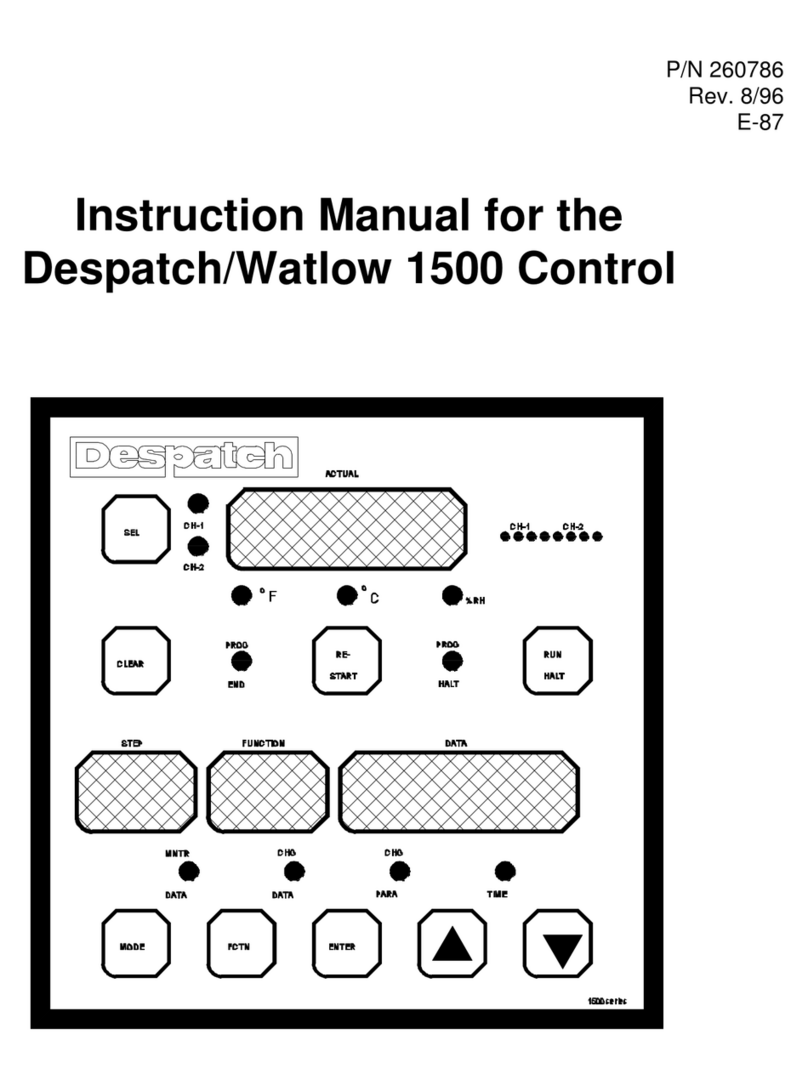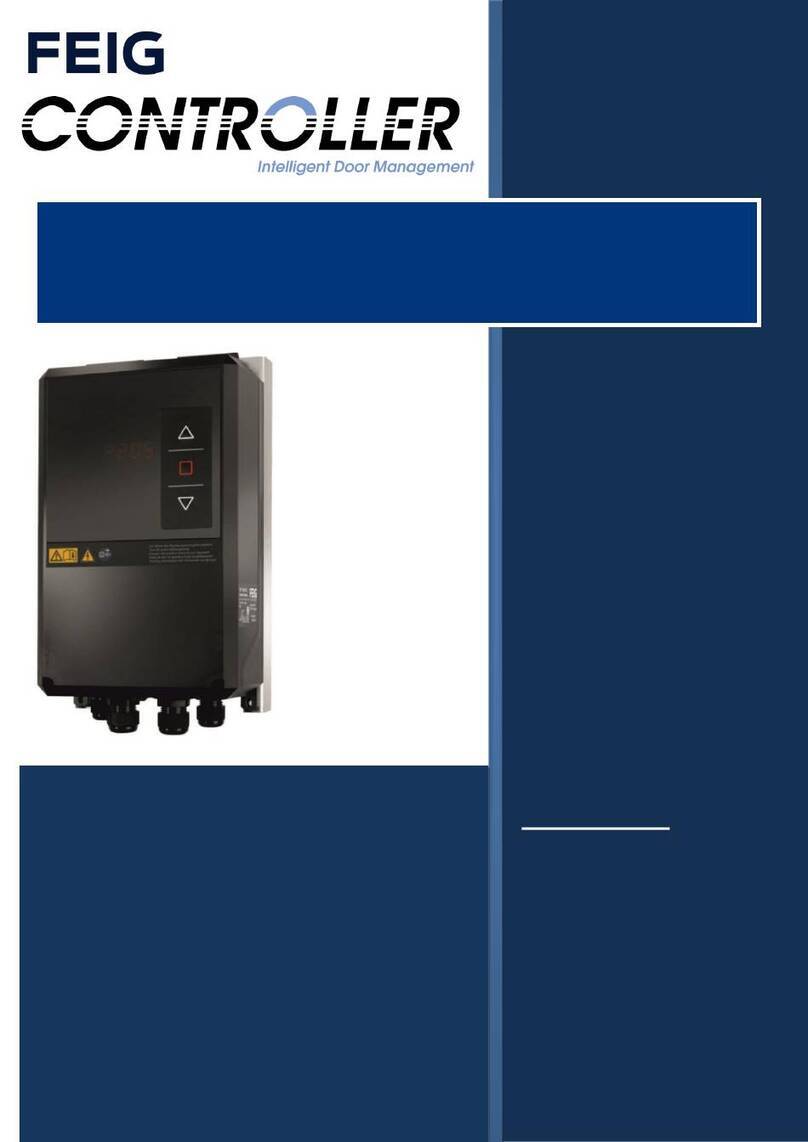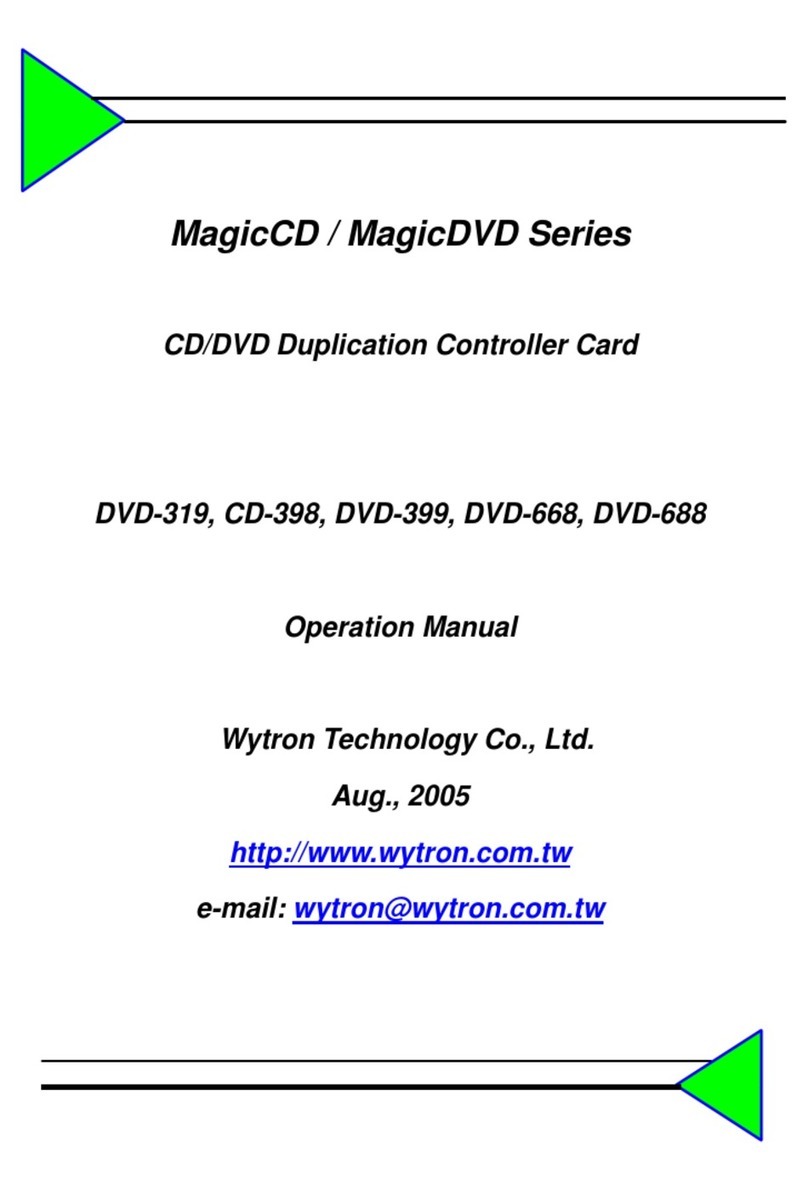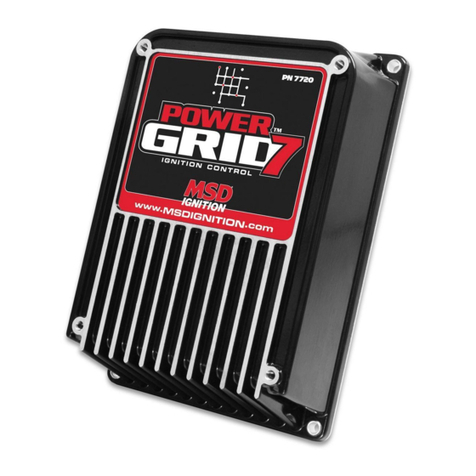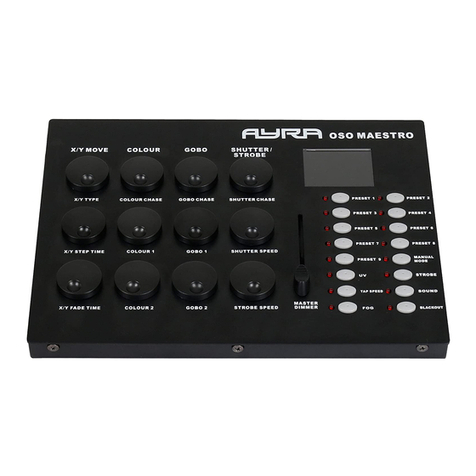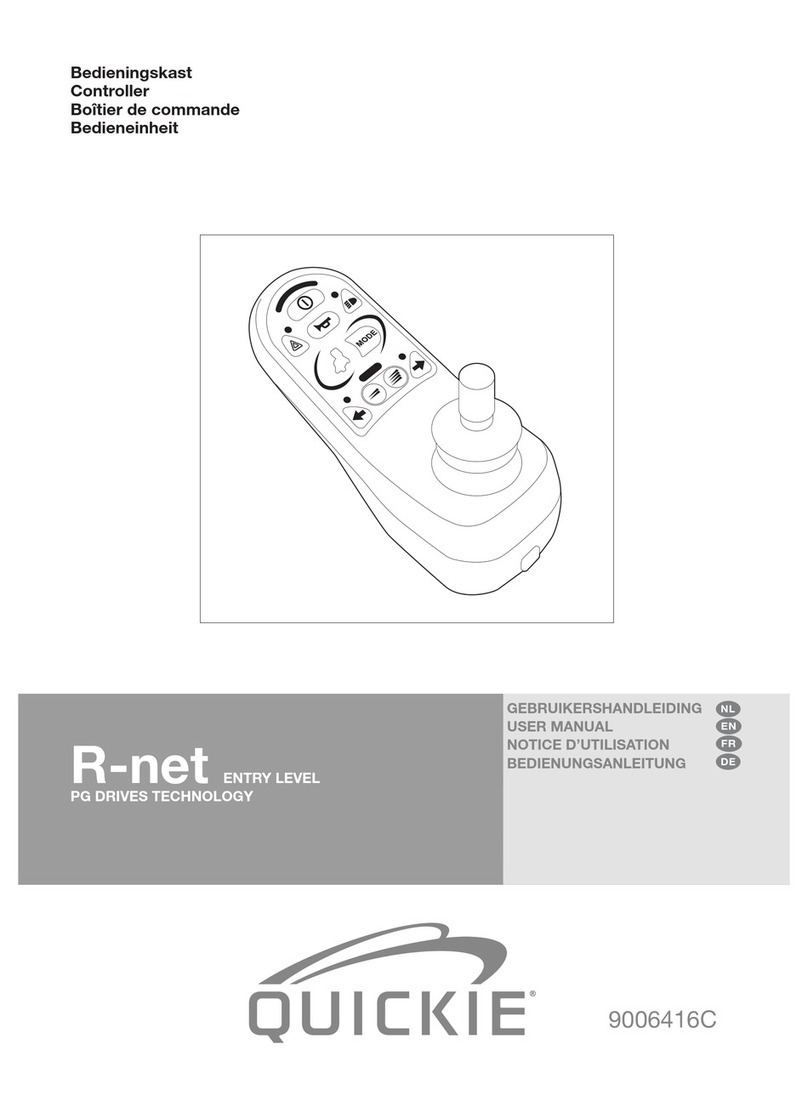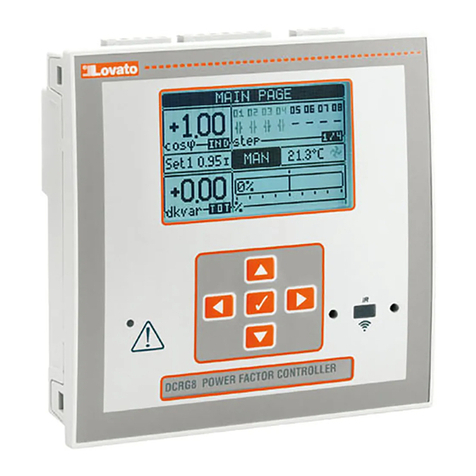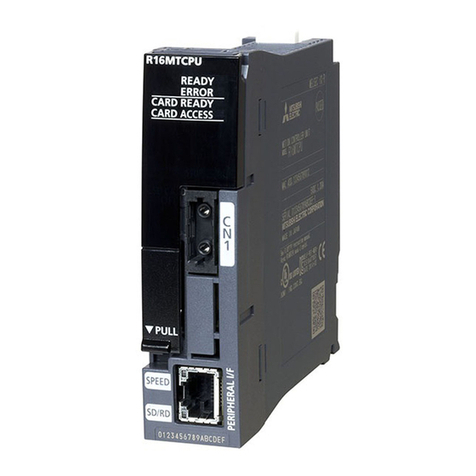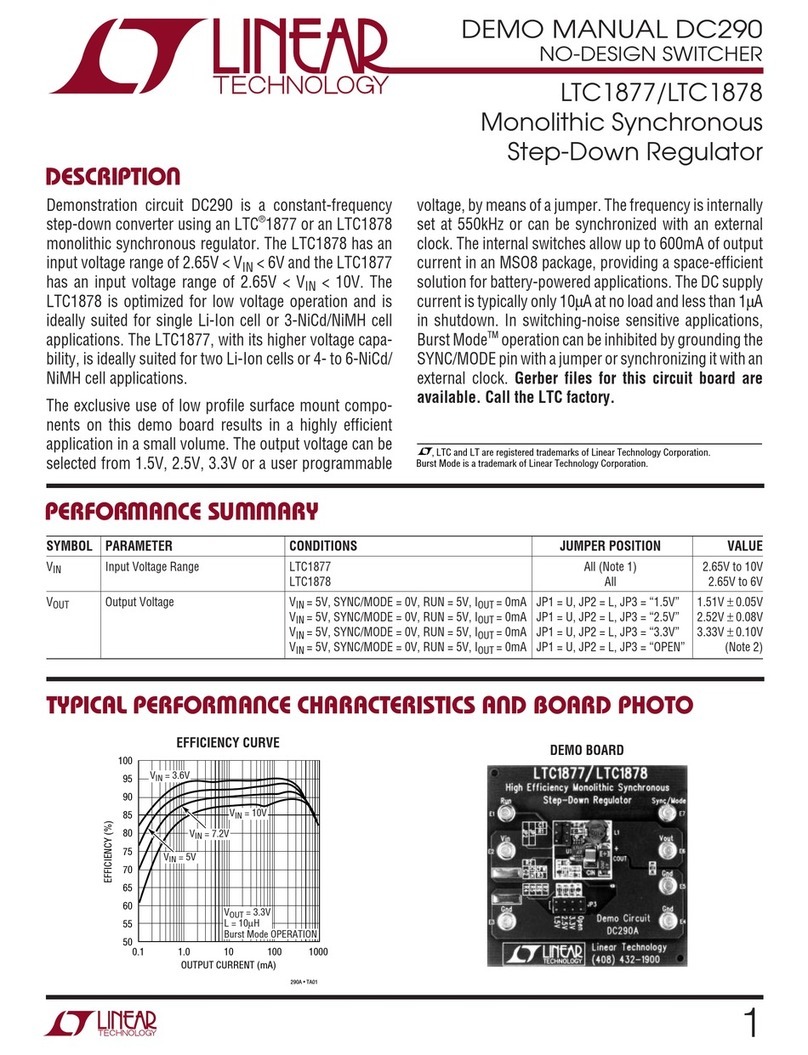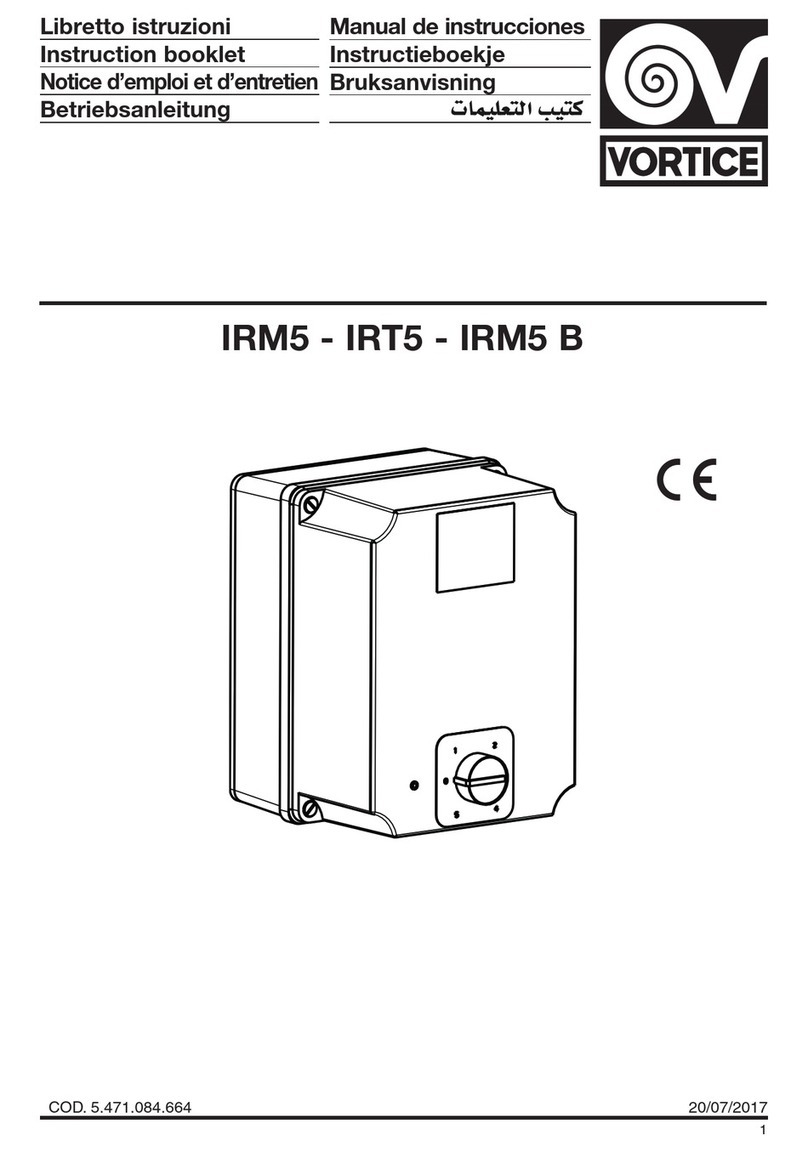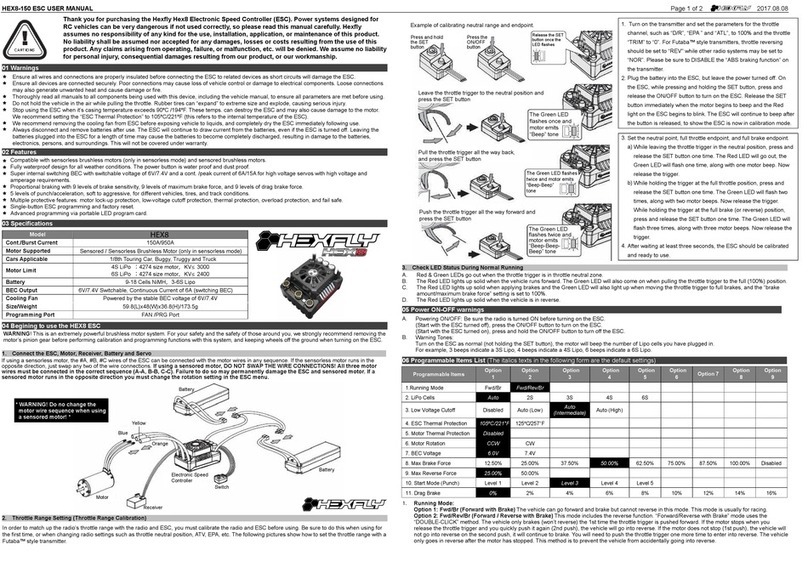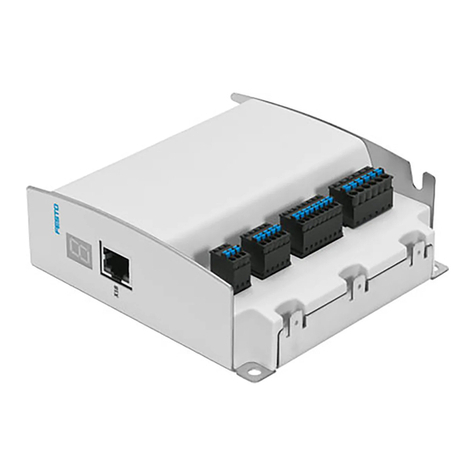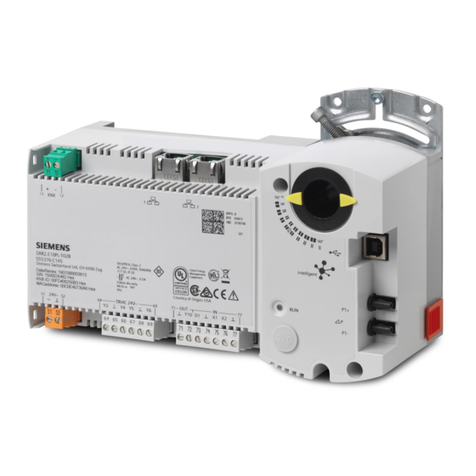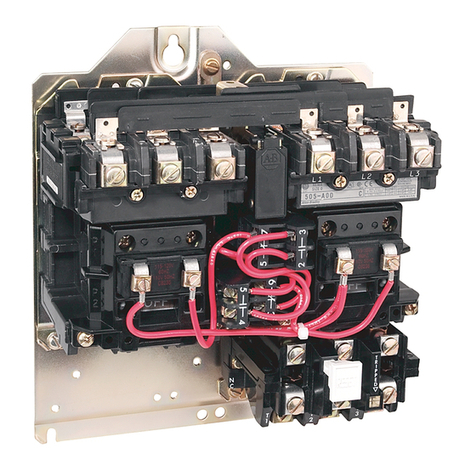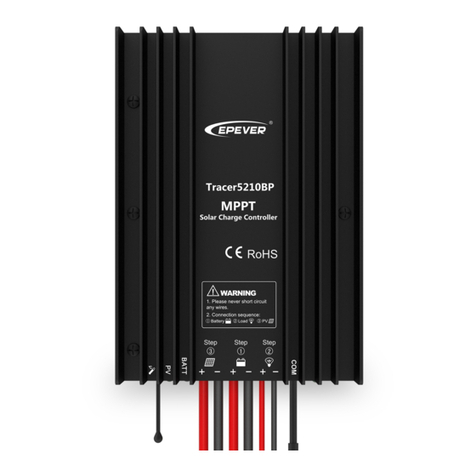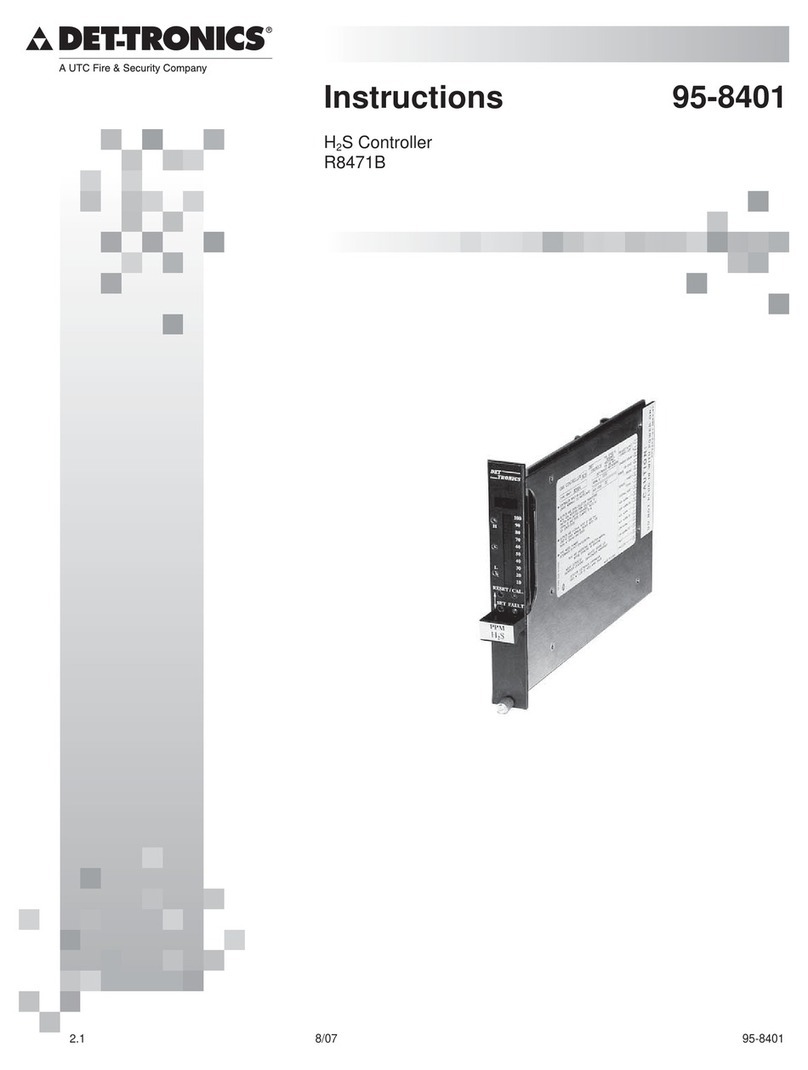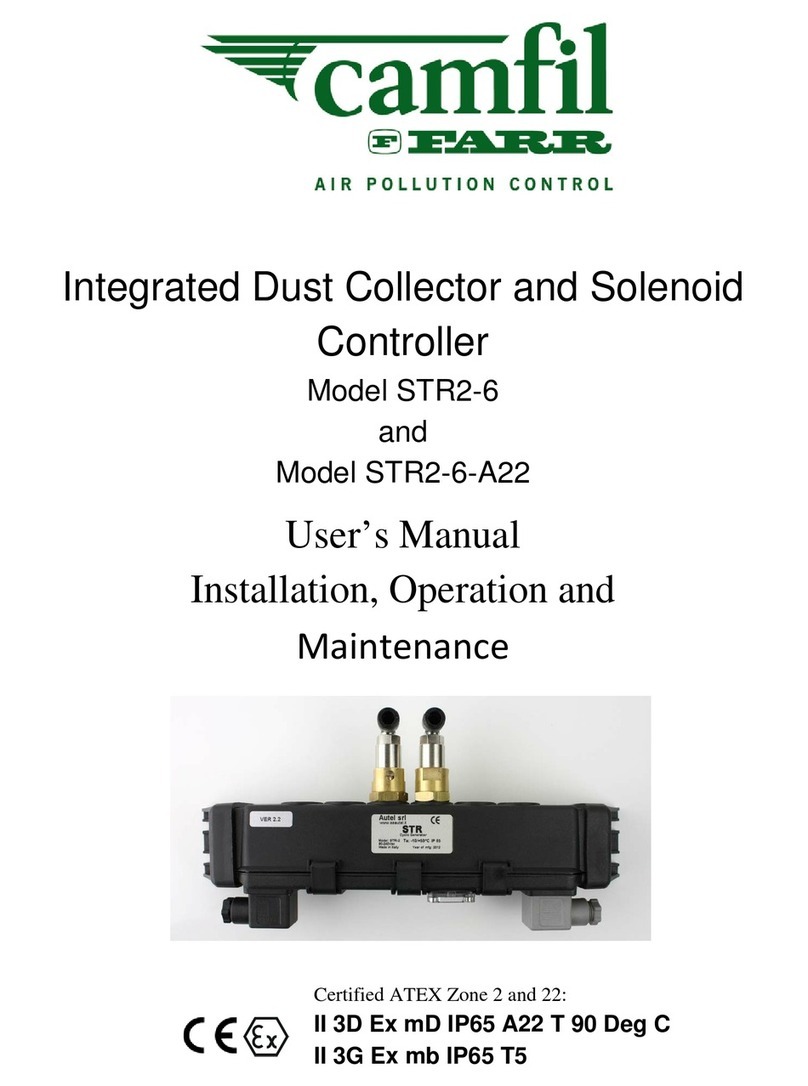Despatch PROTOCOL 3 User manual

PROTOCOL 3™ Controller
USER GUIDE
E105
PN: 313327
REVISION: A
01/2021

E105, 313327, REV A Protocol 3TM User Guide
2 of 82
©2021 ITW EAE. All rights reserved. Despatch is a registered trademark in the U.S. and other
countries. No part of the contents of this manual may be reproduced, copied or transmitted in any form
or by any means without the written permission from ITW EAE, unless for purchaser's personal use.
REVISION RECORD
REVISION
PREPARED BY
CHECKED BY
DATE
1.0
K. Livingston
01/2012
DESCRIPTION: Initial release.
REVISION
PREPARED BY
CHECKED BY
DATE
1.1
K. Livingston
03/2013
DESCRIPTION: Modified instructions for delayed start and remote communication. Modbus
User’s Programming Manual added (E-106/ PN320813, Version 3/2013, Updated
for Engineering Issue 8).
REVISION
PREPARED BY
CHECKED BY
DATE
1.2
K. Livingston
06/2013
DESCRIPTION: Minor edits.
REVISION
PREPARED BY
CHECKED BY
DATE
1.3
E. Anderson
01/29/2021
DESCRIPTION: Minor edits and drawing updates.
REVISION
PREPARED BY
CHECKED BY
DATE
2
SDS
01/29/2021
DESCRIPTION: Removed the . in the file name.
REVISION
PREPARED BY
CHECKED BY
DATE
A
A. Mengesha
01/29/2021
DESCRIPTION: Major reformatting and content revision on all sections.

Protocol 3TM User Guide E105, 313327, REV A
©2021 ITW EAE. All rights reserved. Despatch is a registered trademark in the U.S. and other
countries. No part of the contents of this manual may be reproduced, copied or transmitted in any form
or by any means without the written permission from ITW EAE, unless for purchaser's personal use.
3 of 82
TABLE OF CONTENTS
REVISION RECORD..................................................................................2
TABLE OF CONTENTS .............................................................................3
LIST OF FIGURES.....................................................................................5
LIST OF TABLES.......................................................................................6
1. ABOUT THIS MANUAL..........................................................................7
1.1. Important User Information ...................................................................................... 7
1.2. Manufacturer & Service............................................................................................. 8
1.3. Organization of this Manual ...................................................................................... 8
1.4. Conventions.............................................................................................................. 9
2. SPECIFICATIONS................................................................................10
2.1. Process Input .......................................................................................................... 10
2.2. Outputs................................................................................................................... 12
2.3. Operating Conditions .............................................................................................. 12
2.4. Conformance Norms ............................................................................................... 13
2.5. Display.................................................................................................................... 13
2.6. Data Recorder ......................................................................................................... 14
3. SAFETY................................................................................................15
3.1. General Safety Information ..................................................................................... 15
3.2. Lockout................................................................................................................... 15
3.2.1. Lockout Requirements ........................................................................................................................15
3.2.2. Lockout Procedure with Despatch Products .......................................................................................15
3.3. Maintenance........................................................................................................... 16
3.4. Electrical Maintenance ............................................................................................ 16
3.5. In Case of Fire.......................................................................................................... 16
3.6. Equipment Lockout Requirements........................................................................... 17
4. THEORY OF OPERATION...................................................................18
4.1. System Control—In General .................................................................................... 19
4.2. High-Limit Function ................................................................................................. 19
4.3. Outputs................................................................................................................... 19
4.4. Remote Communication.......................................................................................... 20
5. ASSEMBLY & SETUP..........................................................................22
5.1. Install the Protocol 3 Controller............................................................................... 22
5.2. Protocol 3 Controller Conversion with NO Options .................................................. 22
5.3. Setting up Remote Communication ......................................................................... 23
5.3.1. Protocol 3™ Ethernet Communication Setup......................................................................................23
5.3.2. Protocol 3™ Ethernet Port MAC Address ............................................................................................29

E105, 313327, REV A Protocol 3TM User Guide
4 of 82
©2021 ITW EAE. All rights reserved. Despatch is a registered trademark in the U.S. and other
countries. No part of the contents of this manual may be reproduced, copied or transmitted in any form
or by any means without the written permission from ITW EAE, unless for purchaser's personal use.
6. OPERATING MODES...........................................................................31
6.1. User Controls .......................................................................................................... 31
6.2. First Screens............................................................................................................ 35
6.2.1. Manual Mode ......................................................................................................................................35
6.2.2. Timer Mode.........................................................................................................................................37
6.2.3. Profile Mode........................................................................................................................................38
6.2.4. Main Menu ..........................................................................................................................................39
6.3. Setting up a Profile.................................................................................................. 40
6.3.1. Prepare for Profile Setup.....................................................................................................................45
6.3.2. Sample Profile .....................................................................................................................................46
6.3.3. Key in the Sample Profile Setup ..........................................................................................................48
6.3.4. Programing Worksheet .......................................................................................................................52
6.4. Recorder Control..................................................................................................... 53
6.5. USB Menu............................................................................................................... 54
6.5.1. Working with USB Memory Stick Folders and Files.............................................................................56
6.5.2. File Naming Conventions.....................................................................................................................57
6.5.3. Create a New Name before Writing to the USB Device ......................................................................57
6.6. Configuration Menu ................................................................................................ 58
6.6.1. Alarm Configuration ............................................................................................................................63
6.6.2. Working with Calibration Offsets ........................................................................................................68
6.6.3. Setting-up Remote Communication....................................................................................................70
6.7. Automatic Tuning.................................................................................................... 71
6.8. Product Information................................................................................................ 72
6.9. Service Information................................................................................................. 73
6.10. Remote Operation................................................................................................. 73
6.11. Setting Up Digital Inputs........................................................................................ 74
7. MAINTENANCE ...................................................................................76
7.1. Checklist ................................................................................................................. 76
7.2. Replacement........................................................................................................... 76
8. TROUBLESHOOTING..........................................................................77
8.1. Error Messages and Alarm....................................................................................... 77
8.2. Controller Firmware Revision .................................................................................. 77
8.3. Troubleshoot Protocol Manager/Protocol 3 Controller Communication ................... 77
9. APPENDICES.......................................................................................82
9.1. Standard Products Warranty ................................................................................... 82
9.2. Part Lists ................................................................................................................. 82
9.3. Mechanical Drawings .............................................................................................. 82
9.4. Electrical Schematics ............................................................................................... 82

Protocol 3TM User Guide E105, 313327, REV A
©2021 ITW EAE. All rights reserved. Despatch is a registered trademark in the U.S. and other
countries. No part of the contents of this manual may be reproduced, copied or transmitted in any form
or by any means without the written permission from ITW EAE, unless for purchaser's personal use.
5 of 82
LIST OF FIGURES
Figure 1. Operator Interface ......................................................................................................... 18
Figure 2. Typical Controller Output Sticker. ................................................................................. 20
Figure 3. Protocol Plus to Protocol 3 Connection Conversions. ................................................... 21
Figure 4. Protocol 3™ rear cover removed .................................................................................. 24
Figure 5. Protocol 3™ Ethernet module MAC address ................................................................ 24
Figure 6. Protocol 3™ Set IP Address ........................................................................................... 25
Figure 7. Protocol 3™ Assign Ethernet IP address ....................................................................... 25
Figure 8. Protocol 3™ Ethernet search for control ...................................................................... 26
Figure 9. Protocol 3™ Ethernet Modbus settings ........................................................................ 26
Figure 10. Protocol 3™ Ethernet communication check.............................................................. 27
Figure 11. Protocol 3™ Ethernet – controller online ................................................................... 28
Figure 12. Select a Mode Display.................................................................................................. 31
Figure 13. Manual Mode Display Screen. ..................................................................................... 35
Figure 14. Timer Mode Display Screen. ........................................................................................ 37
Figure 15. Profile Mode. ............................................................................................................... 38
Figure 16. Main Menu................................................................................................................... 39
Figure 17. Profile Setup................................................................................................................. 40
Figure 18. Profile Setup Menu. ..................................................................................................... 42
Figure 19. Sample Profile.............................................................................................................. 46
Figure 20. Sample Profile Values. ................................................................................................. 47
Figure 21. Recorder Control.......................................................................................................... 53
Figure 22. Recorder Status............................................................................................................ 53
Figure 23. USB Menu. ................................................................................................................... 54
Figure 24. USB Port on Front Panel. ............................................................................................. 56
Figure 25. USB Files and Folders Requirements (as seen from Windows Explorer). ................... 56
Figure 26. Configuration Menu (see also Table 16 for more information). ................................. 59
Figure 27. How High, Low and Band process alarms are implemented....................................... 67
Figure 28. Service Information Screen.......................................................................................... 73
Figure 29. Standard Digital Input Wiring. ..................................................................................... 74
Figure 30. Check Cabling............................................................................................................... 78
Figure 31. Older model serial converter schematic...................................................................... 79
Figure 32. Newer model serial converter schematic.................................................................... 80
Figure 33. USB Converter Schematic. ........................................................................................... 81

E105, 313327, REV A Protocol 3TM User Guide
6 of 82
©2021 ITW EAE. All rights reserved. Despatch is a registered trademark in the U.S. and other
countries. No part of the contents of this manual may be reproduced, copied or transmitted in any form
or by any means without the written permission from ITW EAE, unless for purchaser's personal use.
LIST OF TABLES
Table 1. Process Input................................................................................................................... 10
Table 2. Protocol 3 Outputs.......................................................................................................... 12
Table 3. Operating Conditions. ..................................................................................................... 12
Table 4. Conformance Norms. ...................................................................................................... 13
Table 5. Display. ............................................................................................................................ 13
Table 6. Data Recorder. ................................................................................................................ 14
Table 7. Protocol Plus to Protocol 3 Controller Conversion. ........................................................ 23
Table 8. Keypad Buttons and Functions. ...................................................................................... 32
Table 9. LEDs and Functions. ........................................................................................................ 34
Table 10. Sub Menu Descriptions. ................................................................................................ 39
Table 11. Profile Setup Options. ................................................................................................... 41
Table 12. Profile Setup Steps, Options and Descriptions. ............................................................ 43
Table 13. Profile Parameter Options. ........................................................................................... 50
Table 14. Programming Worksheet.............................................................................................. 52
Table 15. USB Menu Options........................................................................................................ 54
Table 16. Configuration Menu in Tabular Format. ....................................................................... 60
Table 17. Protocol 3 Possible Alarm Settings. .............................................................................. 64
Table 18. Glossary of Alarm Terms............................................................................................... 66
Table 19. Automatic Tuning Options. ........................................................................................... 71
Table 20. Product Information Details.......................................................................................... 72
Table 21. Input Settings. ............................................................................................................... 75
Table 22. Error Messages and Next Steps. ................................................................................... 77

Protocol 3TM User Guide E105, 313327, REV A
©2021 ITW EAE. All rights reserved. Despatch is a registered trademark in the U.S. and other
countries. No part of the contents of this manual may be reproduced, copied or transmitted in any form
or by any means without the written permission from ITW EAE, unless for purchaser's personal use.
7 of 82
1. ABOUT THIS MANUAL
1.1. Important User Information
All rights reserved. No part of the contents of this manual may be reproduced,
copied, or transmitted in any form or by any means including graphic, electronic,
or mechanical methods or photocopying, recording, or information storage and
retrieval systems without the written permission of the publisher, unless it is for
the purchaser's personal use.
The information in this manual is subject to change without notice and does not
represent a commitment on the part of ITW EAE - Despatch. ITW EAE –Despatch
does not assume any responsibility for any errors that may appear in this manual.
In no event will ITW EAE –Despatch be liable for technical or editorial omissions
made herein, nor for direct, indirect, special, incidental, or consequential
damages resulting from the use or defect of this manual.
Values displayed on screens are examples only. Though those
values may be typical, contact ITW EAE - Despatch for the final
value.
Users of this equipment must comply with operating procedures
and training of operation personnel as required by the most
recent Occupational Safety and Health Act (OSHA), Section 5 and
relevant safety standards, as well as other safety rules and
regulations of state and local governments. Refer to the relevant
safety standards in OSHA and the most recent National Fire
Protection Association (NFPA), section 86.
Danger!
Only fully trained and qualified personnel should setup and
maintain this equipment. Improper setup and operation of this
equipment could cause an explosion that may result in
equipment damage, personal injury or possible death!

E105, 313327, REV A Protocol 3TM User Guide
8 of 82
©2021 ITW EAE. All rights reserved. Despatch is a registered trademark in the U.S. and other
countries. No part of the contents of this manual may be reproduced, copied or transmitted in any form
or by any means without the written permission from ITW EAE, unless for purchaser's personal use.
The information in this document is not intended to cover all possible conditions
and situations that might occur. The end user must exercise caution and common
sense when installing or maintaining Despatch products. If any questions or
problems arise, call ITW EAE - Despatch at 1-800-726-0110 or 1-952-469-5424.
1.2. Manufacturer & Service
ITW EAE - Despatch has specialized in thermal processing for over 100 years.
Technical expertise gained over those years helps provide innovative solutions to
critical applications in vertical markets and cutting-edge technology worldwide.
Despatch products are backed by a drive for long-term customer satisfaction and
a strong sense of responsibility. The worldwide network of factory-trained Service
Professionals is available to support your Despatch equipment. From full service
preventive maintenance to routine repair and certified calibration and uniformity,
the ITW EAE - Despatch service network is positioned to respond to your business
needs. Our service programs are customized to meet your specific needs using
our Advantage Service Assurance Program (ASAP). For more information on
ASAP, visit www.despatch.com.
1.3. Organization of this Manual
This owner’s manual contains the most comprehensive set of information for the
Despatch Truck-in oven series, including installation instructions, theory of
operation, and operating instructions, among other things. To save time and
expense in case of trouble, it is urged that the operators search this manual for
helpful suggestions before requesting factory assistance.
Danger!
Failure to heed warnings in this instruction manual and on the
oven could result in personal injury, property damage or death.

Protocol 3TM User Guide E105, 313327, REV A
©2021 ITW EAE. All rights reserved. Despatch is a registered trademark in the U.S. and other
countries. No part of the contents of this manual may be reproduced, copied or transmitted in any form
or by any means without the written permission from ITW EAE, unless for purchaser's personal use.
9 of 82
1.4. Conventions
This icon signifies information that describes an unsafe condition that
may result in death, serious injury, or damage to the equipment.
Danger!
Danger is the signal word used to indicate a hazardous
situation that, if not avoided, will result in death or severe
injury.
Warning!
Warning is the signal word used to indicate a hazardous
situation that, if not avoided, could result in death or severe
injury.
Caution!
Caution is the signal word used to indicate a hazardous
situation that, if not avoided, could result in moderate or minor
injury.
Notice
Notice is the signal word used to indicate a hazardous situation
that, if not avoided, could result in property damage.
This icon signifies important supplemental information.
LOG OUT
Bold, 10-point Sans-Serif typeface indicates a specific key or
button on screen to click.

E105, 313327, REV A Protocol 3TM User Guide
10 of 82
©2021 ITW EAE. All rights reserved. Despatch is a registered trademark in the U.S. and other
countries. No part of the contents of this manual may be reproduced, copied or transmitted in any form
or by any means without the written permission from ITW EAE, unless for purchaser's personal use.
2. SPECIFICATIONS
2.1. Process Input
Table 1. Process Input.
Item
Description
Sampling Rate:
4 per second
Resolution:
16 bits. Always four times better than display resolution.
Impedance:
>10MΩresistive, except DC mA (5Ω) and V (47kΩ)
Temp Stability:
Error <0.01% of span per °C change in ambient temperature
Supply Variation:
Supply voltage influence negligible within supply limits
Humidity Influence:
Negligible if non‐condensing
Process Display:
Displays up to 5% over and 5% under span limits
Process Variable
Input Offset:
Reading adjustable ± Controller Span. Values added to Process
Variable, Values subtracted from Process Variable.
Sensor Break
Detection:
•Thermocouple & RTD—SSR output goes to 0
•High Limit Sensor Break alarms activate
•Linear (4 to 20mA, 2 to 10V and 1 to 5V only)—SSR output
goes to 0
Isolation:
Isolated from all outputs (except SSR driver) at 240V AC
Supported
Thermocouple Types
& Ranges:
Type
Range °C
Range °F
B
+100 to 1824°C
+211 to 3315°F
C
0 to 2320°C
32 to 4208°F
D
0 to 2315°C
32 to 4199°F
E
-240 to 1000°C
‐400 to 1832°F
J
-200 to 1200°C
-328 to 2192°F *
K
‐200 to 1200°C
‐328 to 2192°F *
L
0 to 762°C
32 to 1402°F *
N
0 to 1399°C
32 to 2551°F *
PtRh
0 to 1850°C
32 to 3362°F

Protocol 3TM User Guide E105, 313327, REV A
©2021 ITW EAE. All rights reserved. Despatch is a registered trademark in the U.S. and other
countries. No part of the contents of this manual may be reproduced, copied or transmitted in any form
or by any means without the written permission from ITW EAE, unless for purchaser's personal use.
11 of 82
Item
Description
20%:
40%
R
0 to 1759°C
32 to 3198°F
S
0 to 1762°C
32 to 3204°F
T
‐240 to 400°C
‐400 to 752°F *
Optional decimal place can be displayed up to 999.9°C/F
Thermocouple
Calibration:
±0.1% of full range, ±1LSD (±1°C for internal CJC if enabled).
Linearization better than better ±0.2°C (±0.05 typical) on ranges
marked * in the table above. Linearization for other ranges is
better than ±0.5°C. BS4937, NBS125 & IEC584.
Supported RTD Types
& Ranges:
Type
Range °C
Range °F
3‐Wire
PT100
‐199 to 800°C
‐328 to 1472°F
NI120
‐80 to 240°C
‐112 to 464°F
Optional decimal place can be displayed up to 999.9°C/F
RTD Calibration:
0.1% of full range, ±1LSD
Linearization:
Linearization better than ±0.2°C (±0.05 typical).
PT100 input to BS1904 & DIN43760 (0.00385Ω/Ω/°C).
RTD Excitation:
Sensor current 150μA ±10%
Lead Resistance:
<0.5% of span error for max 50Ωper lead, balanced
Supported Linear
Types & Ranges:
Type
Range
Offset Range
mA DC
0 to 20mA DC
4 to 20mA DC
mV DC
0 to 50mV DC
10 to 50mV DC
V DC
0 to 5V DC
1 to 5V DC
V DC
0 to 10V DC
2 to 10V DC
Scalable from ‐9999 to 10000. Decimal point selectable from 0 to
3 places, but limited to 5 display digits (e.g. 9999.9)
Maximum Overload:
1A on mA input terminals, 30V on voltage input terminals
DC Calibration:
±0.1% of full range, ±1LSD
DC Input Multi‐Point:
Linearization:
Up to 15 scaling values can be defined anywhere between 0.1 and
100% of input

E105, 313327, REV A Protocol 3TM User Guide
12 of 82
©2021 ITW EAE. All rights reserved. Despatch is a registered trademark in the U.S. and other
countries. No part of the contents of this manual may be reproduced, copied or transmitted in any form
or by any means without the written permission from ITW EAE, unless for purchaser's personal use.
2.2. Outputs
Table 2. Protocol 3 Outputs.
Item
Description
Relays
Type & Rating:
Single pole single throw (SPST); 2A resistive at 120/240VAC
Lifetime:
>200,000 operations at rated voltage/current
Isolation:
Basic Isolation
Linear DC
Resolution:
8 bits in 250mS (10 bits in 1s typical, >10 bits in >1s typical)
Accuracy:
±0.25% of range, (mA @ 250W, V @ 2kW). Degrades linearly to
±0.5% for increasing burden (to specification limits)
Isolation:
Basic Isolation
2.3. Operating Conditions
Table 3. Operating Conditions.
Item
Description
Temperature:
•Operating: 0°C to 55°C (32°F to 131°F)
•Storage: –20°C to 80°C (-4°F to 176°F)
Relative Humidity:
20% to 95% non‐condensing
Supply Voltage and
Power:
100 to 240VAC ±10%, 50/60Hz, 20VA

Protocol 3TM User Guide E105, 313327, REV A
©2021 ITW EAE. All rights reserved. Despatch is a registered trademark in the U.S. and other
countries. No part of the contents of this manual may be reproduced, copied or transmitted in any form
or by any means without the written permission from ITW EAE, unless for purchaser's personal use.
13 of 82
2.4. Conformance Norms
Table 4. Conformance Norms.
Item
Description
EMI:
CE: Complies with EN61326
Safety Considerations:
CE: Complies with EN61010‐1. UL, cUL to UL61010C‐1. Pollution
Degree 2, Installation Category II
Front Panel Sealing:
IP65 rating. IP20 behind the panel. (IP rating not recognized /
approved by UL)
Front Panel Cleaning:
Wash with warm soapy water and dry immediately. Close the
USB cover (if fitted) before cleaning.
2.5. Display
Table 5. Display.
Item
Description
Display Type:
160 x 80 pixel, monochrome graphic LCD with a dual color
(red/green) backlight
Display Area:
66.54mm (W) x 37.42mm (H)
Display Characters:
0 to 9, a to z, A to Z, plus ( ) ‐and _

E105, 313327, REV A Protocol 3TM User Guide
14 of 82
©2021 ITW EAE. All rights reserved. Despatch is a registered trademark in the U.S. and other
countries. No part of the contents of this manual may be reproduced, copied or transmitted in any form
or by any means without the written permission from ITW EAE, unless for purchaser's personal use.
2.6. Data Recorder
Table 6. Data Recorder.
Item
Description
Recording Memory:
1Mb non‐volatile flash memory. Data retained when power is
turned off
Recording Interval:
1; 2; 5; 10; 15; 30 seconds or 1; 2; 5; 10; 15; 30 minutes
Recording Capacity:
Dependent on sample rate and number of values recorded. Two
values can be recorded for up to 7 days at 10s intervals.
More values or faster sample rates reduce the maximum
duration.
RTC Battery Type:
VARTA CR 1616 3V Lithium. Clock runs for >1 year without power
(Part # 274030)
RTC accuracy:
Real Time Clock error <1 second per day

Protocol 3TM User Guide E105, 313327, REV A
©2021 ITW EAE. All rights reserved. Despatch is a registered trademark in the U.S. and other
countries. No part of the contents of this manual may be reproduced, copied or transmitted in any form
or by any means without the written permission from ITW EAE, unless for purchaser's personal use.
15 of 82
3. SAFETY
3.1. General Safety Information
Do not work on the Protocol 3 controller without reading and understanding this
section which contains important information and warnings. Ignoring these
warnings can result in death, serious injury or damage to the machine and
product.
3.2. Lockout
Machine lockout places the Protocol 3 controller into a zero energy state and
prevents accidental machine start up. Always follow the Lockout Procedure
described in this Section before cleaning, maintaining, or repairing the Protocol 3
controller. An accidental start-up, while working on the Protocol 3 controller, can
result in serious injury or death.
3.2.1. Lockout Requirements
1. Every power source that can energize any element of the Protocol 3 controller
must be shut off at the closest possible power source. This includes air, water,
nitrogen and electricity, including the Disconnect Switch.
2. After energy sources are locked out, test to ensure circuits are de-energized.
3.2.2. Lockout Procedure with Despatch Products
Personnel authorized to lockout equipment must have the necessary locks to
perform the lockout.
1. Physically disconnect all electrical power to the machine or lockout the
appropriate breaker or disconnects.
2. Close all valves and bleed off any pressure.
3. Test for power by attempting a start with the machine controls.
4. Identify the Lockout Condition with a tag on the electrical disconnect and
pneumatic shut off valve.
5. When work is complete, remove all tags and restore the machine to its
working state.

E105, 313327, REV A Protocol 3TM User Guide
16 of 82
©2021 ITW EAE. All rights reserved. Despatch is a registered trademark in the U.S. and other
countries. No part of the contents of this manual may be reproduced, copied or transmitted in any form
or by any means without the written permission from ITW EAE, unless for purchaser's personal use.
3.3. Maintenance
Only qualified and trained personnel should perform maintenance or repair.
Danger!
Electrical panels contain high voltage. Disconnect and lock out
the power supply before working inside any electrical panels.
Failure to lock out the power supply can result in death or injury.
3.4. Electrical Maintenance
Only qualified and trained personnel should perform electrical maintenance or
electrical repair.
Danger!
Contact with energized electrical sources may result in serious
injury or death.
•Before performing maintenance, disconnect all electrical power from the
machine. Use a padlock and lockout all disconnects feeding power to the
machine.
•Never clean or repair the controller when in operation.
•Unauthorized alterations or modifications to Protocol 3 controller are strictly
forbidden. Never modify any electrical circuits. Unauthorized modifications
can impair the function and safety of the Protocol 3 controller.
3.5. In Case of Fire
Keep the Protocol 3 controller clean and free of scrap materials, oil, or solvents to
prevent the possibility of fire. In the event of fire, use a fire extinguisher as
follows.
1. De-energize the machine immediately by pushing an Emergency Stop push
button (if supplied).
2. Turn off the remote main disconnect (customer supplied disconnect).
3. If the fire is in the workspace, keep the door closed.

Protocol 3TM User Guide E105, 313327, REV A
©2021 ITW EAE. All rights reserved. Despatch is a registered trademark in the U.S. and other
countries. No part of the contents of this manual may be reproduced, copied or transmitted in any form
or by any means without the written permission from ITW EAE, unless for purchaser's personal use.
17 of 82
4. Extinguish the fire.
3.6. Equipment Lockout Requirements
To prevent injury or equipment damage during inspection or repair, the Protocol
3 controller must be locked out.

E105, 313327, REV A Protocol 3TM User Guide
18 of 82
©2021 ITW EAE. All rights reserved. Despatch is a registered trademark in the U.S. and other
countries. No part of the contents of this manual may be reproduced, copied or transmitted in any form
or by any means without the written permission from ITW EAE, unless for purchaser's personal use.
4. THEORY OF OPERATION
The Protocol 3 is a microprocessor based
digital temperature controller designed for
simple and flexible oven operation. The
Protocol 3 controller operates as a dual-
functioning controller/high limit instrument.
The control portion utilizes a
time-proportioning voltage signal to control
heating devices with minimal temperature
fluctuations.
The high limit portion protects the product and/or the oven from overheating. If
the product being processed has a critical high temperature limit, the high limit
set point should be set to a temperature somewhat below the temperature at
which the product could be damaged. If the product does not have a critical high
temperature limit, the high limit set point should be set 5 to 15 degrees higher
than the maximum programmed set point at which the oven will operate.
The Protocol 3 controller provides three primary operating modes:
•Manual: Oven operates continuously at a fixed temperature until turned off.
•Timer: Oven operates at a fixed temperature for a user-selected time period,
and then automatically turns off.
•Profile: Temperatures increase or decrease as defined by 255 segments that
can be allocated to 64 ramp and soak profiles. The profiles can be linked to
provide additional temperature combinations.
The Protocol 3 controlled is equipped to allow a ramp/soak temperature control,
which maintains oven temperature with either a fixed set point or a ramp/soak
profile.
Figure 1. Operator Interface

Protocol 3TM User Guide E105, 313327, REV A
©2021 ITW EAE. All rights reserved. Despatch is a registered trademark in the U.S. and other
countries. No part of the contents of this manual may be reproduced, copied or transmitted in any form
or by any means without the written permission from ITW EAE, unless for purchaser's personal use.
19 of 82
4.1. System Control—In General
•The Protocol 3 controller provides outputs for the cooling fan, door lock
switch/door release pushbutton, and optional beacon light.
•A number of profiles for oven heating cycles are stored in the Protocol 3
controller. Access profiles using the Protocol 3 keypad.
•The Protocol 3 controls the solenoid valves in an inert atmosphere oven for
purge, maintain and water-cooling operation.
•The Protocol 3 can also be operated remotely with a PC running Protocol
Manager Software.
4.2. High-Limit Function
The Protocol 3 controller has an integrated high limit function which disables the
heater output when tripped. The High-Limit temperature is displayed as HLPV
(Manual Mode only).
If the high limit trips, the Hi-Limit indicator will light, and the relay must be
manually reset. Allow the oven to cool several degrees below the set point (or
increase the high limit set point) and then press . The indicator will turn off.
4.3. Outputs
The Protocol 3 controller comes standard with an output signal that can transmit
temperature data, setpoint data or control power to a user-supplied recording
device. Output relays (five) can also signal user-specified events or alarm to
external devices (Figure 2 and Figure 3).
•Heating output: The control output is a DC voltage open-collector output
which is time-proportioned and designed to control a heat control device such
as a solid-state relay.
•High limit: The high limit output is a SPDT relay which is energized under
normal operating conditions. If the control senses a temperature higher than
the high limit setpoint, or if there is a sensor error, the high limit relay will
de-energize until the condition is cleared and Reset is pressed. When the high
limit relay is de-energized, the heater is disabled.

E105, 313327, REV A Protocol 3TM User Guide
20 of 82
©2021 ITW EAE. All rights reserved. Despatch is a registered trademark in the U.S. and other
countries. No part of the contents of this manual may be reproduced, copied or transmitted in any form
or by any means without the written permission from ITW EAE, unless for purchaser's personal use.
•Retransmission: The retransmission output is a signal that is proportional to
the process temperature, setpoint or control power:
o0-5V
o0-10V
o2-10V
o020 ma
o4-20 ma
o0-10VDC Power Supply
The signal can be an input to other devices such as a chart recorder.
•Relays: The five SPST dry contact relay outputs can be configured to function
as alarms, events, or end of cycle. These outputs can be utilized in Manual,
Timer or Profile Modes.
4.4. Remote Communication
When used with a PC running Protocol Manager™ software, the Protocol 3
controller allows an operator to remotely control the oven, download recipes and
log data.
Figure 2. Typical Controller Output Sticker.
Table of contents
Other Despatch Controllers manuals
